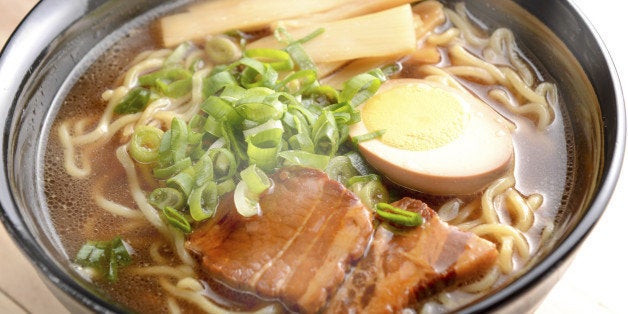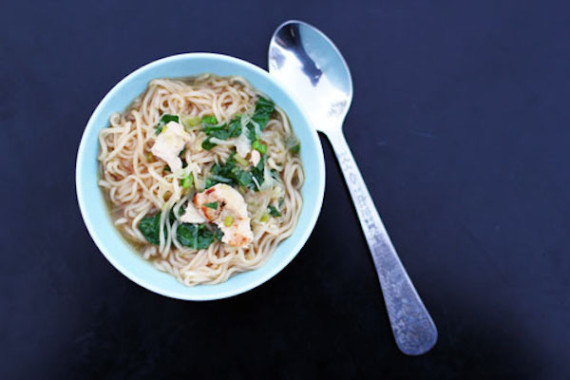
If you’ve ever tasted it, you know that restaurant-served ramen is an entirely different soup game than the instant stuff on which penny-pinching college students subsist. The broth is meatier, the noodles fluffier, the whole experience more elegant (when a bowl clocks in at $15, it'd better be). Sometimes the soup even comes with an egg on top. Glory.

But how do the two varieties compare when it comes to nutrition? Turn over a plastic-wrapped Nissin Top Ramen and you’ll find that there are 380 calories, 14 grams of fat and 1,820 mg of sodium condensed into the whole brick of the brand’s Chicken Flavor.
The FDA recommends the average American consumes no more than 2,300 mg of salt per day. A package of Top Ramen’s noodles contains more than half of this.
It's a little more difficult, of course, to reveal the health stats on restaurant-made ramen. While the dish itself is most definitely trending, and specialty shops are popping up with fierce determination, the meal has yet to be homogenized in a fast food sense, which would enable consumers to be more privy to its nutritional data.
The Star analyzed Momofuku Toronto's signature ramen bowl to find it contained 1,241 calories, 69 grams of fat and 2,858 mg of sodium. That is a lot of salt.
Consuming too much sodium can increase a person's risk of heart failure, osteoporosis, stroke, high blood pressure and heart disease. Not what comes to mind while slurping up a warm, comforting bowl of soup.
With ingredients like pork shoulder, pork belly and tare, Momofuku makes no health promises to its diners. This dish's salt count is certainly not the definitive number for all restaurants' ramen -- nor does it imply that every bowl of soup the restaurant served is just as sodium packed. But, chances are, many ramen meals need to be accompanied by a tall glass of water.
If salt intake is a concern of yours (as it very well may be) but you've got ramen on the brain, you might try mixing up this lower-sodium (but still cheaper than restaurant-served) version from This Week for Dinner.
Get the recipe here. Oh, and feel free to add an egg. The "perfect protein" won't push your sodium count too far over the edge.